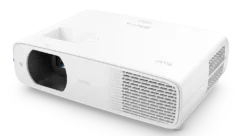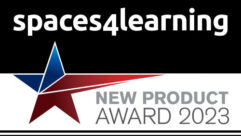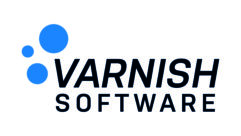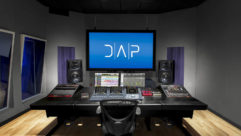
Picture This: Off the Charts
Aug 1, 2004 12:00 PM,
By Jeff Sauer
NEC MT1075
I don’t mean to be cynical about the effect Moore’s law has had on the projector industry. After all, it’s really wonderful to see the progress projector manufacturers have made during recent years by increasing brightness, improving image quality, and lowering prices. Just a few years ago, for example, a sub-$1,000 projector seemed pretty outlandish, as did 2000 lumens for $2,000 at XGA resolution. However, those advances, on display annually at InfoComm, have become a little predictable, and you hardly need to venture to the industry’s larger trade shows to see them.What is interesting is this: now that brightness, contrast, and other standard specifications have hit solid levels in just about every class of product, projector makers are finding innovative ways to make their devices easier to use and more helpful to the user. In that respect, InfoComm is still the place to be to see how several product designers are thinking outside the proverbial box, at least a little bit.NICE AND EASYFor example, NEC and Epson announced new products that start with impressive-enough statistics. NEC’s newest installation projector is the MT1075, boasting 4200 lumens in a 13-pound box. At just $5,495, it does its part to chip away at the industry average for per-lumen cost. Epson offered two classes of new products. The Value Series PowerLite 61 and 81 target the educational market and offer 2000 lumens for a street price of $1,499 for SVGA and $1,799 for XGA. The conference-room class PowerLite 830p and wireless-capable 835p cost $3,699 and $3,899 respectively and boast 3000 lumens at XGA resolution.But there’s something else that’s quite clever. All of these projectors include an integrated light sensor that detects the unit’s distance from the screen in order to focus the projector automatically. Cheap digital cameras have that functionality so they can take quick point-and-shoot snapshots. There should be no reason a projector can’t have it, too. In a way, autofocus is similar to the automatic keystone adjustment that is becoming more common in current travel projectors, with a built-in level to detect vertical offset. Both features are smart ways to help with fast, painless projector placement and setup.But the light sensor’s functionality doesn’t stop there. Achieving accurate color is more difficult for most users than focusing, especially if the projection surface isn’t pure white. To that end, Epson and NEC also use that light sensor to detect the color of the screen or wall. By doing something akin to a white balance, these projectors can automatically adjust the colors to ensure an accurate image regardless of whether you’re projecting against an off-white wall, a bone-colored whiteboard, or even an old-fashioned blackboard.NEC takes this sensor one step farther. By measuring the distance to the screen across the entire 4:3 image rectangle, the MT1075 can perform not just auto keystone correction but also automatic 3D Reform, or cornerstone correction. As long as the sensor can find a rectangular border for sizing, it can leverage NEC’s 3D Reform (found in projectors like the HT1100 and GT6000) to display an appropriate 4:3 image from an off-axis projector location. If you’ve ever tried to tug, shim, and prod cornerstone correction software to do the same thing manually, you’ll quickly appreciate the value. Of course, an installation projector, which by definition is likely to be set up by an AV professional and rarely moved, is probably not the most important showcase for these light sensor functions. Still, it’s a good testing ground for NEC. One can expect this functionality, once proven robust, will make its way into travel projectors, where it will be much more useful.InFocus is another company that’s been working to make projectors more user-friendly, starting with a small LCD that now appears on the top of many of its products. Thus far this little readout display serves only a few functions, like reporting the current source input and counting down the warm-up and cooldown periods for the projector. But even by themselves, these features offer feedback that an impatient user normally wouldn’t have. That’s a nice element of support.InFocus has also improved the functionality of PC-free presentations by incorporating support for increasingly popular USB Flash drives into its new ASK/Proxima C170 meeting-room projector. Admittedly, this feature is similar to the PC Card readers that have shown up in many models from several companies during the past few years. However, because USB drives are hot-swappable, they don’t require a projector power-down. Because they are inexpensive and portable, expect PC-free presentations to become even more popular.Although it has more to do with ease of install than ease of use, a commercially oriented version of the short-throw rear-projection TV shown by Thomson at CES in January was demonstrated by InFocus. A new optical engine yields a 61-inch RPTV that’s just 6 inches deep. That almost puts rear projection in the same league as flat-panel plasmas and LCDs. It’s really a tour de force of optics design.Barco was also thinking creatively when it designed the newly announced iCon H600 projector. First, it’s a 1920-by-1080 high-resolution 16:9 LCD projector with 6000 lumens of brightness that can show wonderfully sharp HD pictures. That’s pretty special by itself. However, Barco has outfitted the iCon with a Pentium 4 processor, Windows XP, and software that supports configuration of as many as four video or graphic picture-in-picture windows within the 1920-by-1080 image. In other words, in addition to showing a lovely large movie, the iCon also can fill, for example, a control-room display screen with four full-resolution 720-by-480 video feeds and still have room for a graphical background.SECURITY MEASURESOf course, there were many other exciting display products at InfoComm. But here’s one more “innovative” trend: security has been a serious concern of projector companies for several years, particularly with regard to models destined for schools and bars, clubs, and digital signage applications. Thus far, aside from physically tying down a projector, most theft-deterrent features have amounted to not letting a crook use the projector after it’s been stolen. At InfoComm Panasonic unveiled a new single-chip projector that has a removable and replaceable top panel. Its default top is white, but it could have a logo — Joe’s Bar and Grill, First Presbyterian, or UC State — that would certainly be a more visible sign to potential thieves that they might have a hard time selling the unit on the black market. Call it low-tech if you want, but it’s likely to be more effective than a lot of other security solutions.Jeff Sauerwrites the “Picture This” column for Sound & Video Contractor and is a contributing writer for Video Systems. He’s a video producer, an industry consultant, and director of the Desktop Video Group, a video and computer products testing lab in Cambridge, Massachusetts. He can be reached at[email protected].










